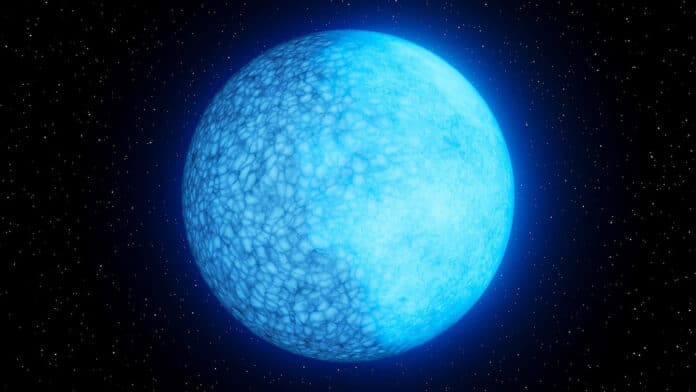White dwarfs, the extremely dense remnants left behind by most stars after their death, are characterized by a mass comparable to that of the Sun compressed into the size of an Earth-like planet. In the resulting strong gravity, heavy elements sink towards the center, and the upper layer of the atmosphere contains only the lightest element present, usually hydrogen or helium.
Astronomers have found that at least one member of the cosmic family known as white dwarfs has two faces. The white dwarf has two halves, one formed of hydrogen and the other of helium.
The Zwicky Transient Facility (ZTF), an instrument that monitors the skies every night from Caltech‘s Palomar Observatory in San Diego, made the first discovery of the newly discovered white dwarf, which has been given the name Janus after the two-faced Roman deity of transition. Ilaria Caiazzo, a postdoctoral scholar at Caltech, had been looking for strongly magnetic white dwarfs like the ZTF J1901+1458 object she and her colleagues discovered earlier using ZTF.
Caiazzo conducted more research using the CHIMERA instrument at Palomar and HiPERCAM on the Gran Telescopio Canarias in Spain’s Canary Islands after one candidate object stood out for its rapid brightness variations. These findings demonstrated that Janus rotates on its axis once every fifteen minutes.
The stunning double-faced nature of the white dwarf was discovered through further observations taken with the W. M. Keck Observatory on top of Maunakea in Hawaii. The team split the white dwarf’s radiation into a spectrum of wavelengths with distinct chemical signatures using a device known as a spectrometer. When just one side of the object was visible, the data showed hydrogen to be there (but no indication of helium) and only helium when the other side came into view.
Why would a white dwarf fly alone in space have two sides that are so radically different? Though they admit to being perplexed, the team has developed some hypotheses. One theory is that we could see a unique stage in the evolution of white dwarfs on Janus.
Caiazzo explains, “Not all, but some white dwarfs transition from being hydrogen- to helium-dominated on their surface. We might have possibly caught one such white dwarf in the act.”
Over time, as white dwarfs cool, the materials mix up together. However, in some cases, the hydrogen is mixed into the interior and diluted such that helium becomes more prevalent.
Janus may embody this transition phase, but one pressing question is: why is the transition happening so disjointedly, with one side evolving before the other?
The answer lies in magnetic fields, suggest scientists.
Caiazzo explains, “Magnetic fields around cosmic bodies tend to be asymmetric or stronger on one side. Magnetic fields can prevent the mixing of materials. So, if the magnetic field is stronger on one side, that side would have less mixing and thus more hydrogen.”
Credit: K. Miller, Caltech/IPAC
The team’s second explanation for the two faces relies on magnetic fields. However, in this case, it is hypothesized that the fields will alter the pressure and density of the atmospheric gases.
Where the magnetic fields are strongest, it may be possible for a hydrogen “ocean” to form because the magnetic fields may cause the atmospheric gas pressures to decrease. Although we are still determining which of these hypotheses is accurate, we cannot find any other explanations for the asymmetric sides besides magnetic fields.
Caiazzo says, “To help solve the mystery, the team hopes to find more Janus-like white dwarfs with ZTF’s sky survey. ZTF is very good at finding strange objects. Future surveys, such as those to be performed by the Vera C. Rubin Observatory in Chile, should make finding variable white dwarfs even easier.”
Journal Reference:
- Caiazzo, I., Burdge, K.B., Tremblay, PE. et al. A rotating white dwarf shows different compositions on its opposite faces. Nature (2023). DOI: 10.1038/s41586-023-06171-9
